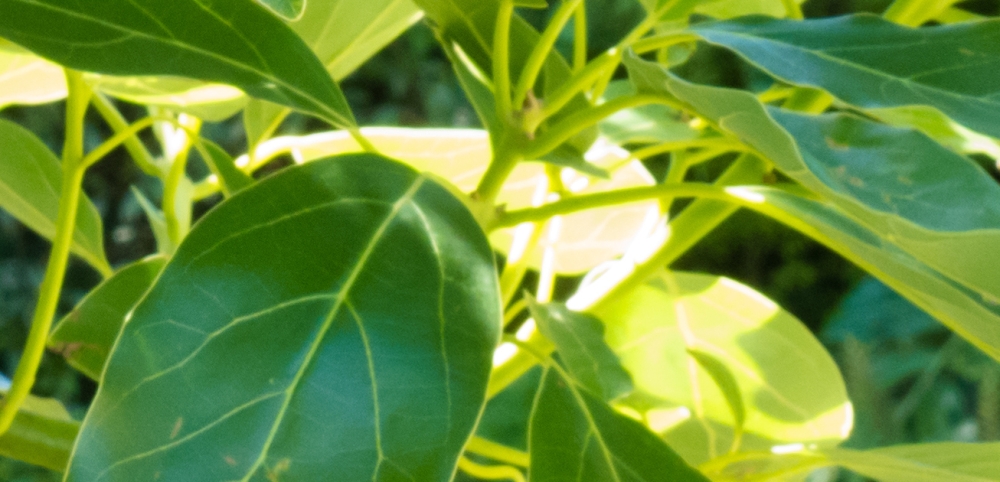
Chow Group - Thylakoid structure and function
We investigate the structural organization of the thylakoid membrane; electron flow in leaves; quantification of Photosystem II; and photodamage.
Research theme
About
In plants, photosynthetic membranes (thylakoids or flattened sacs) use light energy to split water into protons, electrons and oxygen. The protons are utilized to make the energy-storage compound ATP. The electrons are transferred along a chain that includes the two photosystems, ending in the energy-storage compound NADPH and also along cyclic paths that help to conserve some of the energy in ATP. Together, NADPH and ATP drive the conversion of CO2 into carbohydrates with the help of many enzymes.
The Thylakoid structure and function Group investigates:
- The structural organization of the thylakoid membrane system in varying conditions;
- The paths, or segments of the paths, of electron flow in situ in leaves;
- The in vivo quantification of Photosystem II which performs the water splitting; and
- The photodamage, and recovery from photodamage, of Photosystem II under stress.
Awards
Publications
Selected publications
- Jia, H., Liggins, J.R. and Chow, W.S. (2014) Entropy and biological systems: Experimentally-investigated entropy-driven stacking of plant photosynthetic membranes. Scientific Reports. 4: 4142.
- Kou, J., Takahashi, S.,Oguchi, R., Fan, D.-Y., Badger, M. R. and Chow, W. S. (2013) Estimation of the steady-state cyclic electron flux around Photosystem I in spinach leaf discs in white light, CO2-enriched air and other varied conditions. Functional Plant Biology 40: 1018-1028.
- Hu, Y.-Y, Fan, D.-Y., Losciale, P., Chow, W. S. and Zhang, W.-F. (2013) Whole-tissue determination of the rate coefficients of photoinactivation and repair of Photosystem II in cotton leaf discs based on flash-induced P700 redox kinetics. Photosynthesis Research 117: 517-528.
- Anderson, J.M., Horton, P., Kim, E.-H. and Chow, W.S. (2012) Towards elucidation of dynamic structural changes of plant thylakoid architecture. Philosophical Transactions of the Royal Society of London B. 367: 3515-3524.
- Jia, H., Liggins, J.R. and Chow, W.S. (2012) Acclimation of leaves to low light produces large grana: the origin of the predominant attractive force at work. Philosophical Transactions of the Royal Society of London B. 367: 3494-3502.
- Oguchi, R., Douwstra, P., Fujita, T., Chow, W.S. and Terashima, I. (2011) Intra-leaf gradients of photoinhibition induced by different color lights: Implications for the dual mechanisms of photoinhibition and for the application of conventional chlorophyll fluorometers. New Phytologist. 191: 146-159.
- Jiang, C.-D., Wang, X., Gao, H.-Y., Shi, L. and Chow, W. S. (2011) Systemic Regulation of Leaf Anatomical Structure, Photosynthetic Performance and High-light Tolerance in Sorghum. Plant Physiology. 155: 1416-1424.
- Fan, D.-Y., Hope, A.B., Smith, P.J., Jia, H., Pace, R.J., Anderson, J.M. and Chow, W.S. (2007) The stoichiometry of the two photosystems in higher plants revisited. Biochimica et Biophysica Acta 1767: 1064-1072.
- Kim, E.-H., Chow, W.S., Horton, P. and Anderson, J.M. (2005) Entropy-assisted stacking of thylakoid membranes. Biochimica et Biophysica Acta 1708: 187-195.
- Hendrickson L., Pogson, B.J., Förster B., and Chow W.S. (2005). A simple chlorophyll fluorescence parameter that correlates with the rate coefficient of photoinactivation of Photosystem II. Photosynthesis Research 84: 43-49.
- Matsubara S. and Chow W.S. (2004) Populations of photoinactivated photosystem II reaction centers characterized by chlorophyll a fluorescence lifetime in vivo. Proceedings of the National Academy of Science U.S.A. 101: 18234-18239.
- Chow, W.S. (1999). Grana formation: entropy-assisted local order in chloroplasts? Australian Journal of Plant Physiology 26: 641-647.
- Park, Y.-I., Chow, W.S. and Anderson, J.M. (1995) Light inactivation of functional photosystem II in leaves of peas grown in moderate light depends on photon exposure. Planta 196: 401-411.
- Öquist, G., Chow, W.S. and Anderson, J.M. (1992) Photoinhibition of photosynthesis represents a mechanism for the long-term regulation of photosystem II. Planta 186: 450-460.
- Chow, W.S., Hope, A.B. and Anderson, J.M. (1991) Further studies on quantifying photosystem II in vivo by flash-induced oxygen yield from leaf discs. Australian Journal of Plant Physiology 18: 397-410.
- Chow, W.S., Melis, A. and Anderson, J.M. (1990) Adjustments of photosystem stoichiometry in chloroplasts improve the quantum efficiency of photosynthesis. Proceedings of the National Academy of Science USA 87: 7502-7506.
- Chow, W.S. (1984) The extent to which the spatial separation between Photosystems I and II associated with granal formation limits non-cyclic electron flow in isolated lettuce chloroplasts. Archives of Biochemistry and Biophysics 232: 162-171.
- Rubin, B.T., Chow, W.S. and Barber, J. (1981). Experimental and theoretical considerations of the mechanism controlling cation effects on thylakoid membrane stacking and chlorophyll fluorescence. Biochimica et Biophysica Acta 634: 174-190.
- Chow, W.S., Wagner, G. and Hope, A.B. (1976) Light-dependent redistribution of ions in isolated spinach chloroplasts. Australian Journal of Plant Physiology 3: 853-861.




